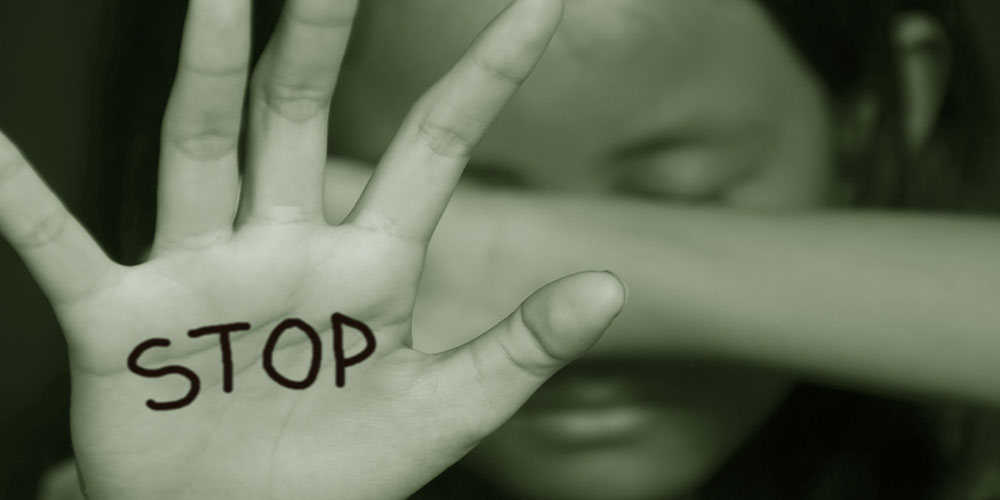Did you know April is National Child Abuse Prevention Month? The Children’s Bureau, which is part of the U.S. Department of Health and Human Services, funds this initiative and encourages families and communities to increase awareness and provide education and support to families through resources and strategies to prevent child abuse.
We at Campus Safety wanted to do our part and take the time to look at a form of child abuse that is often the most difficult to discuss: child sexual abuse.
Child Protective Service agencies substantiated or found evidence to support a claim of child abuse every 11 minutes in 2016. This means an estimated 57,329 children were victims of sexual abuse that year.1 This shocking statistic only scratches the surface of child sexual abuse in the United States.
While a 2012 report suggesting a 62% decrease in substantiated cases of child sexual abuse from 1990 to 2010 may provide some respite, we can all agree that the above statistic is enough to prove it is still a serious threat facing our youth each and every day.
In this four-part series, CS will cover several different topics related to child sexual abuse.
In this article (Part 1), we will discuss general statistics surrounding child sexual abuse, children who are at risk, signs of sexual abuse and its long-term effects.
In Part 2, we will take a look at perpetrators of child sexual abuse and their predatory behaviors.
In Part 3, we will talk about how to report suspected child sexual abuse and how to help students who have been sexually abused.
Part 4 will cover how your campus can implement prevention methods to protect students from sexual abuse.
First, let’s look at more of the staggering statistics to better understand the pervasiveness of child sexual abuse in our society. Please note, however, the accuracy of some of these numbers are strongly debated as most child sexual abuse is never reported.
General Statistics
- 70% of all sexual assaults (including assaults on adults) happen to children2
- 1 in 10 children will be sexually assaulted before the age of 183
- 1 in 7 girls and 1 in 25 boys will be sexually assaulted before the age of 183
- 52.8% of child sexual abuse incidents involve penetrative abuse4
- Less than 12% of child sexual abuse is reported to police5
- Only 38% of child victims disclose their sexual abuse6
- Of those disclosures, 40% tell a close friend rather than an adult or person of authority
- Children tell of their abuse an average of nine times before someone believes them
- CPS agencies investigate about 55% of reported child abuse; the remaining cases are closed for lack of adequate information or other reasons3
- However, only 4-8% of child sexual abuse reports are fabricated
- 70% of child sex offenders have between one and nine victims, while 20% have 10 to 40 victims7
- A typical pedophile will commit 117 sexual crimes in a lifetime8
- The average sexually abusive relationship lasts four years9
- 1 in 5 children are solicited sexually online before the age of 1810
- Child sexual assault victims are 4.7 times more likely to be subsequent victims of a sex crime11
- Child sexual assaults are most likely to occur around 8 a.m., 12 p.m. and between 3 p.m. and 4 p.m.12
- For children ages 12 to 17, there is a peak in assaults in the late evening hours
Who Are the Victims of Child Sexual Abuse?
Perpetrators of child sexual abuse have disclosed that they will look for passive, quiet or troubled children, often from single-parent or broken homes, according to Darkness to Light. This puts children living in foster homes at an increased risk of sexual abuse. These children are 10 times more likely to be sexually abused than children who live with both biological parents.
Children who live with a single parent with a live-in partner are also 20 times more likely to be victims than children living with both biological parents.3
Children with disabilities are four to 10 times more vulnerable to sexual abuse than their non-disabled peers. More than 90% of individuals with a developmental delay or a disability will be sexually assaulted at least once in their lifetime, and 49% will experience 10 or more abuse incidents.13
While sexual abuse affects children and families from all walks of life, the following demographics also put children at greater risk:
Gender
According to the Department of Justice, 82% of all child sexual abuse victims are female. Females are five times more likely to be abused than males. However, males are more likely to die or be seriously injured by their abuser.
Women who experience sexual abuse as a child are also two to three times more likely to be sexually assaulted later in life.12
Age
Children are the most vulnerable to sexual abuse between ages seven and 13. The average age for first abuse is 9.9 years for boys and 9.6 years for girls.9
Additionally, more than 20% of children are sexually abused before the age of eight.12 The below graphic from the Rape, Abuse & Incest National Network (RAINN) shows the breakdown of child sexual abuse for children under 12 and children between the ages of 12 and 17.

Race
Black children are almost twice as likely to be sexually abused than white children. Children of Hispanic ethnicity also have a slightly greater risk than non-Hispanic white children.3
Socioeconomic Status
Children in low socioeconomic households are three times as likely to be identified as victims of child sexual abuse. The likelihood of child sexual assault is tripled for children whose parent(s) are not in the labor force.3
Location
Children living in rural areas are almost two times more likely to be victims of child sexual abuse.3
Continue on to Page 2 for the signs and long-term effects of child sexual abuse







